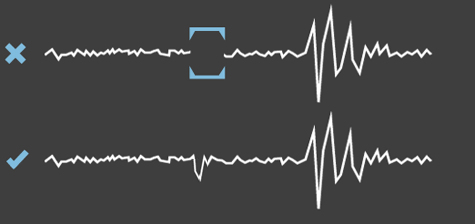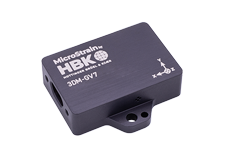LXRS® PROTOCOL
The LXRS® wireless protocol is a 2.4GHz IEEE 802.15.4 compliant communication architecture featuring Lossless Extended Range Synchronized wireless data. LXRS combines microsecond time-synchronization with a scalable star network. User controllable sampling rates are automatically coordinated over thousands of wireless sensor nodes, all with 100% reliable data throughput under most operating conditions.
LOSSLESS

LXRS® lossless protocol combines the simplicity of wireless systems with the reliability of hardwired data transmission. LXRS works by leveraging advanced bi-directional radio communication protocols to acknowledge when data packets are successfully received by a wireless gateway. Data that are not acknowledged remain within each wireless sensor node's non-volatile memory for re-transmission according to the network scheduler. All data are time-stamped by each node at the time of analog-to-digital (A/D) conversion, and therefore, always remain accurately time-stamped, even when re-transmitted.
EXTENDED RANGE

Extended range radio links enable wireless communication up to two kilometers line-of-sight. The wireless radio signal is user-programmable between 70 meters and two kilometers to allow users to select the range, power consumption, or security requirements of a given wireless sensing application. Actual range depends a lot on environmental variables such as obstructions, radio frequency (RF) interference, antenna height, and orientation, so our configuration software includes a RF survey feature for on-site omtimization Typical ranges are around 800 m outdoors, and 50 m indoors or with obstructions.
SYNCHRONIZED

LORD MicroStrain® wireless nodes are time-synchronized to ± 32 microseconds to provide precise, comparable measurements on a distributed wireless network. Upon start-up, all sensor nodes within the network synchronize their sampling intervals to the broadcast beacon signal supported by the wireless gateway. The wireless sensors use a high precision real-time clock (± 3 parts per million over a temperature range of -40 to +85 degrees C) to maintain time stability between beacon re-synchronizations, which occur every 20 seconds.
SCALABLE

Wireless gateways may support thousands of wireless sensor nodes based on the required bandwidth of each sensor node. A node’s bandwidth depends on the number of utilized sensor channels as well as the sampling frequency for each channel.










